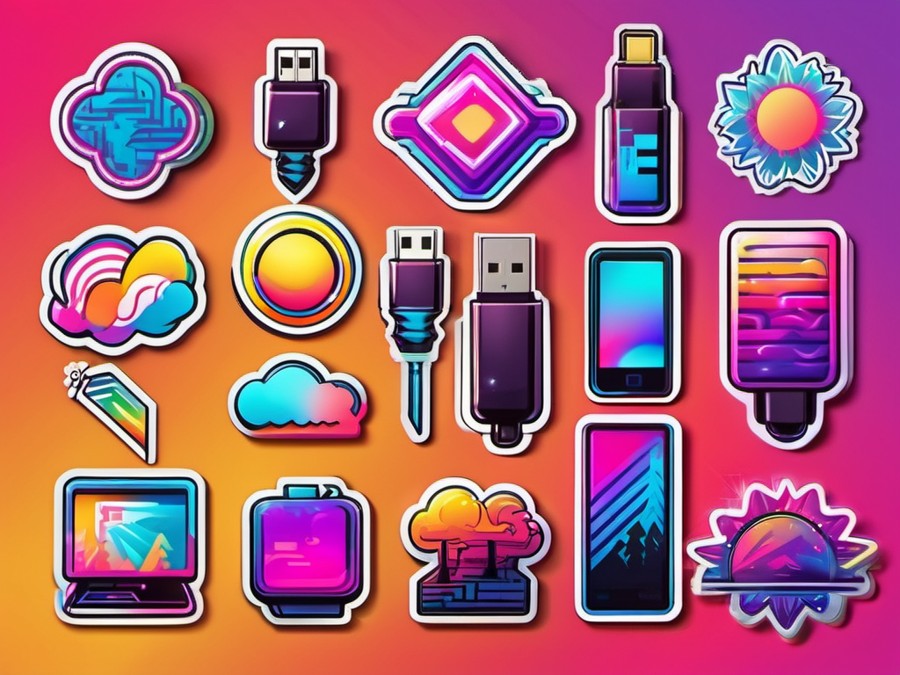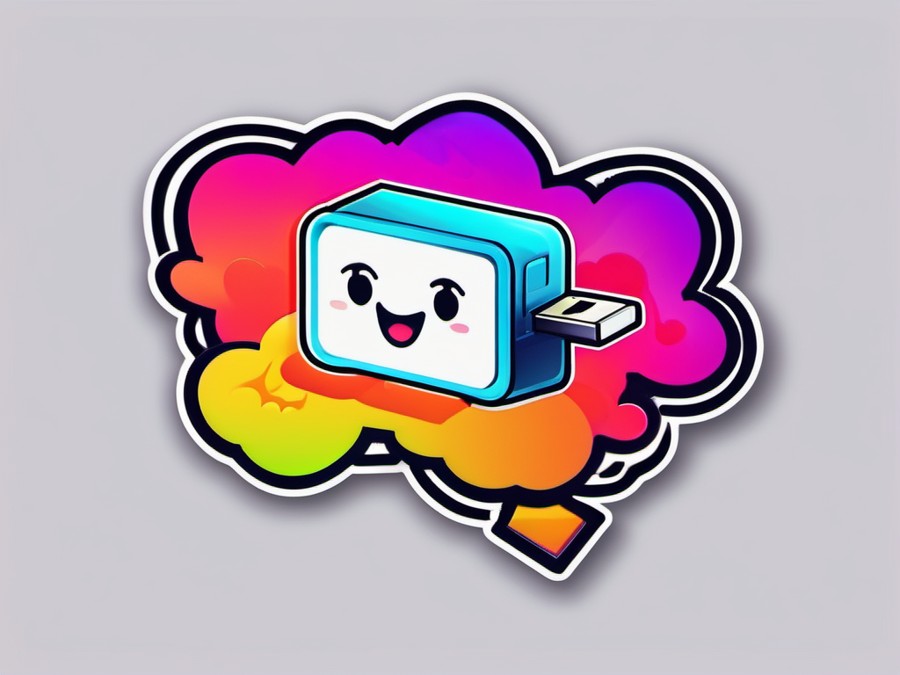· Charlotte Will · Computer Cable Adapters · 8 min read
What is a USB 3.0 to Gigabit Ethernet Adapter?
Discover how a USB 3.0 to Gigabit Ethernet Adapter can boost your network performance, providing faster speeds and more stable connections. Learn about its features, benefits, and how to set it up for optimal results.

We’ve all had those moments where the internet connection isn’t quite up to par. Whether you’re trying to stream a movie, play an online game, or simply browse the web, a slow or unstable connection can be incredibly frustrating. Enter the USB 3.0 to Gigabit Ethernet Adapter—a game-changer in the world of networking devices. But what exactly is it, and how does it work? Let’s dive in!
Introduction
In today’s digitally connected world, a stable and fast internet connection is more than just a luxury—it’s a necessity. While most devices come with built-in network interfaces, they often fall short in providing the speed and reliability needed for certain tasks. This is where a USB 3.0 to Gigabit Ethernet Adapter comes into play.
Understanding USB and Ethernet
Before we get into the nitty-gritty of how a USB 3.0 to Gigabit Ethernet Adapter works, let’s quickly go over what USB and Ethernet are.
USB (Universal Serial Bus) is a standard for connecting peripherals to computers and other devices. USB 3.0, in particular, offers high-speed data transfer rates, making it ideal for networking devices like Ethernet adapters.
Ethernet, on the other hand, is a family of networking technologies for wired LAN (Local Area Network) connectivity. Gigabit Ethernet is a term used to refer to Ethernet networking hardware that supports data transfer rates of up to 1,000 Mbps (megabits per second).
Why the Need for an Adapter?
You might be wondering, “Why do I need an adapter when my device already has a network interface?” The answer lies in the limitations of built-in network interfaces. They often provide slower data transfer rates and are more susceptible to interference, particularly with WiFi.
An adapter not only provides faster speeds but also offers a more stable connection, making it an excellent choice for tasks that require high bandwidth and low latency.
How Does a USB 3.0 to Gigabit Ethernet Adapter Work?
At its core, a USB 3.0 to Gigabit Ethernet Adapter is designed to convert USB signals into Ethernet signals, allowing you to connect your device to a wired network using a USB port.
The Mechanism Behind the Adapter
When you plug in the adapter, your device recognizes it as a network interface. The adapter’s internal chipset converts the USB signals into Ethernet signals, which are then transmitted through the Ethernet port. This process allows data to be sent and received over a wired network, providing faster and more reliable connectivity.
Components of the Adapter
A typical USB 3.0 to Gigabit Ethernet Adapter consists of a few key components:
- USB port: This is where you plug the adapter into your device.
- Ethernet port: This is where you connect an Ethernet cable to establish a wired connection.
- Internal chipset: The brain of the adapter, responsible for converting USB signals into Ethernet signals.
Setting Up the Adapter
Setting up a USB 3.0 to Gigabit Ethernet Adapter is usually straightforward:
- Physical connection: Plug the adapter into a USB port on your device and connect an Ethernet cable to the adapter.
- Driver installation: For some adapters, you may need to install drivers. This is often automatic, but if it isn’t, follow the manufacturer’s instructions.
- Configuration: Once installed, you can configure the network settings through your device’s operating system.
For more detailed setup instructions, you can refer to this guide.
Benefits of Using a USB 3.0 to Gigabit Ethernet Adapter
Now that we understand how the adapter works, let’s explore some of its benefits.
Improved Network Performance
One of the most significant advantages of using a USB 3.0 to Gigabit Ethernet Adapter is the improvement in network performance. Faster data transfer rates mean that you can stream, game, or download files more quickly.
Stability and Reliability
Wireless connections, while convenient, are often plagued by interference and signal loss. A wired connection, however, provides a more stable and reliable internet connection. This is particularly beneficial for tasks that require consistent connectivity, such as online gaming or video conferencing.
Portability
Unlike built-in network interfaces, a USB 3.0 to Gigabit Ethernet Adapter is highly portable. You can easily carry it around and use it with different devices, making it an ideal choice for travelers and remote workers.
Cost-Effective Solution
Upgrading your device’s hardware to improve network performance can be expensive. A USB 3.0 to Gigabit Ethernet Adapter, on the other hand, offers a cost-effective solution. It’s not only affordable but also provides long-term savings by enhancing your device’s functionality.
Features to Look for in a Good USB 3.0 to Gigabit Ethernet Adapter
When shopping for a USB 3.0 to Gigabit Ethernet Adapter, there are several features you should keep an eye out for:
Speed and Bandwidth
Ensure that the adapter supports Gigabit Ethernet capabilities. This will provide you with data transfer rates of up to 1,000 Mbps, ensuring fast and efficient data transfer.
Compatibility
Check the adapter’s compatibility with your operating system and device. Many adapters are designed to work seamlessly with both Windows and MacOS, but it’s always good to double-check.
Durability and Build Quality
A good adapter should be built to last. Look for one with a robust construction that can withstand the wear and tear of regular use.
Additional Features
Some adapters come with additional features such as LED indicators for connectivity status or a compact and ergonomic design. These can enhance your user experience and make the adapter more convenient to use.
For more information on the benefits of USB 3.0/USB 3.1 external hard drives, you can refer to this article.
Common Use Cases for a USB 3.0 to Gigabit Ethernet Adapter
A USB 3.0 to Gigabit Ethernet Adapter has a wide range of applications. Here are a few common use cases:
Enhancing Home Office Productivity
If you work from home, a stable and fast internet connection is crucial for productivity. A USB 3.0 to Gigabit Ethernet Adapter can provide just that, enabling you to work more efficiently.
Gaming and Streaming
Online gaming and streaming require fast and stable internet connectivity. A wired connection provided by the adapter can reduce lag and improve your gaming experience.
Small Business Networks
For small businesses, a USB 3.0 to Gigabit Ethernet Adapter can be an affordable solution for expanding network capabilities. It allows you to connect more devices to the network without having to invest in new hardware.
Travel and Remote Work
If you travel frequently or work remotely, a portable adapter can be a lifesaver. It allows you to maintain a stable internet connection no matter where you are.
Setting Up Your USB 3.0 to Gigabit Ethernet Adapter
Setting up your USB 3.0 to Gigabit Ethernet Adapter is a breeze. Here’s a step-by-step guide for both Windows and MacOS:
Step-by-Step Guide for Windows
- Plug the adapter into a USB port on your computer.
- If prompted, install any necessary drivers. This is often automatic, but if it isn’t, follow the manufacturer’s instructions.
- Once installed, go to ‘Network and Sharing Center’ > ‘Change adapter settings’. You should see the adapter listed there.
- Configure the network settings as needed.
Step-by-Step Guide for Mac
- Plug the adapter into a USB port on your Mac.
- Go to ‘System Preferences’ > ‘Network’. You should see the adapter listed there.
- Select the adapter and click on ‘Advanced’ to configure the network settings as needed.
For more detailed troubleshooting tips, you can refer to this article.
Comparing USB 3.0 to Gigabit Ethernet Adapter with Other Networking Options
Now, let’s compare USB 3.0 to Gigabit Ethernet Adapter with other networking options:
WiFi vs. Ethernet Adapter
WiFi is convenient and ubiquitous, but it’s also prone to interference and signal loss. An Ethernet adapter, on the other hand, provides a more stable and reliable connection.
Ethernet Port vs. USB 3.0 Adapter
While an Ethernet port offers a stable connection, it lacks the portability of a USB 3.0 adapter. The adapter allows you to maintain a wired connection even when using devices that don’t have an Ethernet port.
Gigabit Ethernet Adapter vs. Other Networking Devices
Compared to other networking devices like network cards or WiFi adapters, a Gigabit Ethernet Adapter offers faster speeds and more stable connectivity. However, the best choice depends on your specific needs and setup.
For more information on USB-C Network Adapters and their benefits, you can refer to this article.
Conclusion
A USB 3.0 to Gigabit Ethernet Adapter is an excellent solution for enhancing your device’s network capabilities. It provides faster speeds, more stability, and added portability. Whether you’re looking to improve your home office productivity, enhance your gaming experience, or set up a network for your small business, this adapter has you covered.
So, what are you waiting for? Start exploring the best adapters for your needs and take your network performance to the next level!
FAQs
Can I use a USB 3.0 to Gigabit Ethernet Adapter with my laptop?
Yes, you can. Most laptops have USB ports that support USB 3.0, making them compatible with a USB 3.0 to Gigabit Ethernet Adapter.
What should I do if the adapter is not recognized by my device?
If your device doesn’t recognize the adapter, try updating or reinstalling the drivers. You can also check if the adapter is compatible with your device and operating system.
Is a USB 3.0 to Gigabit Ethernet Adapter better than a regular Ethernet cable?
A USB 3.0 to Gigabit Ethernet Adapter is better than a regular Ethernet cable in terms of portability and convenience. However, for devices that already have an Ethernet port, a cable might be sufficient.
Are there any specific system requirements for using the adapter?
The specific system requirements depend on the adapter. However, most adapters are compatible with both Windows and MacOS and require a USB 3.0 port.
How do I know if my USB port supports USB 3.0?
Most modern devices have USB ports that support USB 3.0 or higher. The port is usuallyblue inside, although this isn’t always the case. You can also check your device’s specifications to confirm.
For more insights into the fastest USB 3.0 flash drives available, you can refer to this article.




